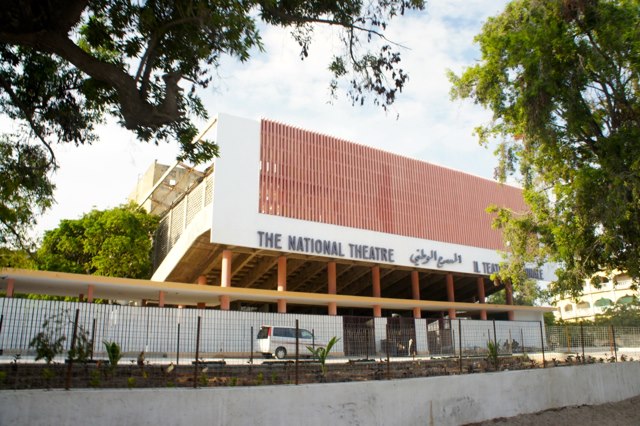National Theatre of Somalia (Q31067)
From CanonBase
No description defined
| Language | Label | Description | Also known as |
|---|---|---|---|
| English | National Theatre of Somalia | No description defined |
Statements
2°2'26"N, 45°20'23"E
0 references
The National Theatre, whose name had recently changed into National Theatre and Arts Culture Awareness Center, is located in the Old Mogadishu District. It was a gift from Mao Zedong, designed by Chinese engineers in the 60s and opened n 1967. The Somali and Chinese governments had an important relationship that started soon after the Somali independence, in June 1963. The National Theatre was the first new public building constructed after the independence. It was the place where art was made and it was a neuralgic place not only in Somalia but one of the leading venues in whole Africa. Despite the simplicity of its lines it is a very recognizable building. The whole complex is raised compared to the road level and the main access was placed in the south side. It consists of a juxtaposition of parallelepipeds of different heights that alternates in a composition of solids and voids. (English)
0 references
The actual theatre was contained in the most iconic parallelepiped. The audience of the theatre, built on a slope, digs the rigidity of the parallelepiped and it is projected in the main façade sustained by reinforced concrete columns. The cladding of that façade, made of vertical bars, recalls the Arab decoration in a much more abstract way. The big audience is sustained by a steel truss. It is tripartite and the public entered from both sides. The main stage was raised by almost a meter and it was accessible through 2 stairwells on the front side and two other entrances, used by the actors, on the back side. The theatre had a significant role during Siad Barre’s administration in its socialist vision for Somalia. Several bands performed there and each they appertained to a different Ministry. The theatre was used as a mean to overtake the clan-based society of Somalia. Each venue was extremely felt by the population who would gather into a varied audience not matter any difference: women and men, educated and not educated persons. (English)
0 references
After the broke of civil war the theatre was one of the first buildings to be destroyed in 1991. Despite the initial attempt to keep the theatre active, testified by the show called "You Destroyed the Roof, So Don't Look Up" soon the theatre stopped to be used. In the 2012 the government announced the reconstruction of the theatre.The institution of the theatre is very important to be preserved. The theatre was not just an occasion to gather different people. Quality theatre is educational because it is an interdisciplinary language able to contain within itself writing, gesture, movement, sound, image and sign. All these elements contribute to transform lives of each individual and the whole community.The theatre in Mogadishu was what made people passionate about arts, therefore, it is the place where to start to preserve Somali culture and language. While the goal of the renovation was to modernise and improve the facility, the new colour scheme is not in line with the cultural significance of the building. The National Theatre is a historic and important cultural landmark in Mogadishu, it is a place where the people of Somalia can come together to celebrate their artistic traditions and share their cultural heritage. (English)
0 references
The bright blue, modern colours chosen for the renovation do not respect the historical and cultural significance of the building. It would have been much more appropriate to restore the buildings to its original form, including the colour scheme. This would have respected the history and cultural significance of the building and would have been more fitting tribute to the artistic traditions of Somalia. (English)
0 references
1967
0 references
1 July 1991
0 references
19 March 2012
0 references
